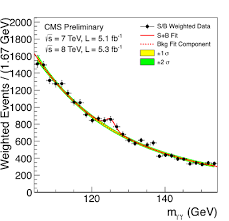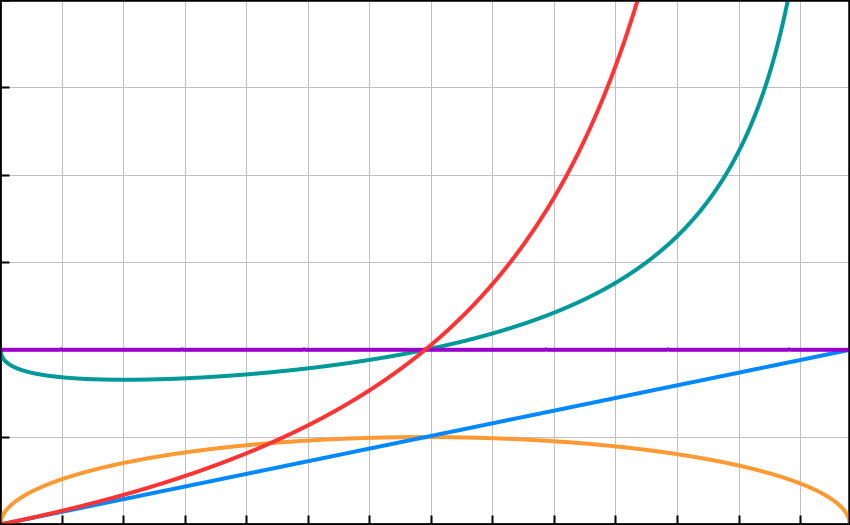Arcanorium CollegeCollege News and Views
Pete Carroll
February
 February Blog.
February Blog.
The POTUS campaign. (President Of The United States)
The popularity of the presidential candidates Trump and Sanders seems like the inevitable symptom of the relative decline of America. Since American industry and the American military have ceased to dominate the planet, America’s real economic growth has stalled, but America’s professional class has continued to take more at the expense of America’s waged class.
Thus the American political consensus has started to unravel and voters begin to entertain far from mainstream candidates.
Trump and Sanders each have a different approach to this problem from opposite ends of the political spectrum. However in the first case regaining industrial and military supremacy seems unfeasible, and in the second case socialism would come at the price of huge social upheaval against vested interests.
Militarism will no longer work in the context of a world awash with cheap geo-politically defensive weaponry and asymmetric warfare, unless you want to make liberal use of WMDs.
Socialism does not seem compatible with the present demand-economy structure.
America needs to look to the health of its manufacturing base and to apportion its wealth accordingly. It also probably needs to adjust to a lower growth model across the board.
The EU Referendum.
David Cameron seems like a brilliant tactician and he seems unlikely to lose the forthcoming EU Referendum, but will he have to change sides to win it? He would probably like to remain part of a completely redesigned European organisation but he knows that he won’t get that.
Problematically for Dave he has to make a show of renegotiating the UK membership to assuage those members of his own party who stand to benefit from the EU’s favouritism towards the interests of big business (against small business) and the political class (against the people).
The reform proposals on the table look cosmetic and paltry and will rapidly become completely ridden over if we capitulate and agree to stay in.
Fear of the unknown may induce some to want to remain in, so the out campaign should focus heavily on visions for an Independent Britain.
The greatest unknown however surrounds what will happen if we decide to remain in. What new nonsensical burdens will the EU impose? What further loss of control of our own affairs shall we suffer? Those of us old enough to remember the first referendum on the Common Market now seem at the forefront of the out campaign – we saw how voting for one thing brought quite another.
If Britain leaves the EU now we could bring down the whole rotten structure, liberate the nations of Europe and restore democracy.
The EU Synarchy remains well aware of this and thus it has a massive incentive to lie, as indeed it did about the ultimate agenda of the Common Market.
As a sort of metaphor for the EU consider the virtues of ABOLISHING BELGIUM.
‘Belgium’ functions as the ultimate adjective of vilest abuse in almost all the languages of the cosmos according to Douglas Adam’s Hitchhikers Guide to the Galaxy, and deservedly so when you consider the history and the current state of the place.
Belgium has always functioned as a sort of awkward weak buffer zone between the west and east Franks (roughly the French and Germanic language groups). Its existence has facilitated most of the bloodiest wars of history. Most Belgians don’t even want Belgium to exist; half would prefer to join the Netherlands and the other half would like to join France. Nobody can recall any famous Belgians because any who become famous usually prefer to imply that they came from somewhere else.
As a sort of unloved ‘in-between place’ with no coherent identity of its own, Belgium suffers from a brief but appalling colonial history, chronic maladministration, and far too many unassimilated immigrants from other cultures. It has become a haven for crime and corruption and the dodgy arms trade, despite its viciously heavy handed policing at low levels. (Don’t go on holiday there unless you intend to behave very obediently and quietly.). Its national monument seems to consist of a boy urinating into a fountain. No wonder the Synarchists behind the EU decided to use Brussels as a facade for their activities, this rotten heart of Europe provides the anonymity from which they and their German paymasters can piss all over the rest of us.
The EU, I loathe it, it looks totally BEL***M!
Because they modelled it on that damn place!
Anyway, despite the trials of February in the northern hemisphere (Peak Suicide and Peak Misery Month, worsened by Lousy Weather, and for many, also by Valentine’s Day, plus we attempt a Saturn working on Arcanorium College.) I do have some uplift for you: -
Welcome to the Specularium Game Theory pages, see the site header bar.
Materiel on Napoleonic 'Chess', Assymetric Combat Polygons, The Astronomicon, and more, to follow.
I’ve had a fascination with games, particularly board games, since my earliest times and have played hundreds and designed dozens more of them. We all have mental models of our universes inside our heads. Sometimes the effort of actually laying the geography out and formally abstracting the rules and the uncertainties pays unexpected dividends.
January
 I have become a grandfather for the first time, with my eldest daughter and her husband creating a delightful daughter a couple of weeks ago, mother, baby, and husband all doing fine. As my eldest has become an SNP convert in her adopted homeland, my granddaughter bears a suitably grand Scots-Norse name.
I have become a grandfather for the first time, with my eldest daughter and her husband creating a delightful daughter a couple of weeks ago, mother, baby, and husband all doing fine. As my eldest has become an SNP convert in her adopted homeland, my granddaughter bears a suitably grand Scots-Norse name.
This sort of immortality plus a modicum of literary immortality will do nicely; no other form of immortality actually seems desirable if you think carefully about it.
And now to technical advances in esoterics: The picture shows the new Epoch Planetary Pocket Wand, currently loaded with the Horus Lamen, plus the other Martial Lamens for Athena, Choronzon, Thor, Mars, Eris, Loki, and Ishtar arraigned around it as we conduct a series of invigorating Martial workings for January in Arcanorium College. The whole set of Planetary and Bi-planetary Lamens consist of plywood carpentry biscuits pointed up and painted and ensigilised. The Lamens serve both as wand loads and as movable symbols for use on an Astronomicon board.
Wizards often tend to fashion and to discard wands, both Longstaffs and pocket sized Purbas, throughout their careers, both to assist practice and to mark the development of their ideas. This one probably qualifies as about my Mk 11 Purba, although in some sense it also qualifies as Marques 11 – 47 all in one go, due to its versatility. Carrying a pocket wand began as an exercise in Chaos Monasticism, but it has become a constant practise, reminding the wizard that the calling, the duty, and the opportunity, remain ever present.
The festive and birthday period brought this remarkable book: -
http://www.amazon.co.uk/Heirs-Forgotten-Kingdoms-Gerard-Russell/dp/1471114716
Most religions have something running from unease to downright rejection towards the Theory of Evolution, but perhaps much more than the simple inconsistencies between scriptural depictions and scientific ideas about the origin of species underlies this.
The book traces the origins and survival of many of the religious and mystical ideas from India through the Middle East to Europe. As most serious scholars have understood for decades now, religions get cobbled together from the memes of previous religions, they don’t spring miraculously into existence out of nothing, and having cobbled themselves together from fragments they continue to evolve and develop, whilst pretending that they haven’t.
Zoroastrianism, the religion of the Persian Empire, went into decline, although it still has a tiny following. However Judaism seems to have adopted some Zoroastrian ideas fairly early on in its development and these later fed into Christianity. The Pythagorean philosophies from classical times continue to influence some minority sects in the Middle East. Mithraism has left at least one very distinctive and surprising mark on European culture. (I won’t spoil it for you, read the book.)
Emotive Religion. Theology looks like the attempt to psychoanalyse Deities from the characteristics they display in scripture and in lore and perhaps in ‘revelation’. We try to second guess or interpret their supposed wishes by such activity, usually to some sort of advantage to ourselves.
Mythology and the History of Religion tend to tell us more about how our human psychology expresses itself in various situations than about the Deities themselves.
Theurgy describes the attempts of magicians to call, conjure, and even coerce, various spirits and deities, on the assumption that such phenomena have some sort of independent metaphysical reality. It seems like an extreme extension of prayer.
Theometry on the other hand implies taking the measure of Deities, including noting how our projections of them has evolved, and also making them to order, on the assumption that such phenomena arise from our own psychology and may also serve as vehicles for liberating our more unusual abilities. This seems more like proper magic.
Rational argument has only a limited role in establishing or destroying faith in Deities. Emotive and peer pressure forces have a far greater effect, and all religions employ both although the emotive hooks used by religions or sects within religions can change and evolve with time.
A previous blog discusses the emotive tone of what Richard Dawkins called ‘The World’s Second Worst Religion’ the one that has relied heavily on ‘Guilt and Self-Righteousness’ duality: -
http://www.specularium.org/blog/item/34-abuse
That perhaps now shows signs of improvement under a new Pontiff.
However if you tried to devise the most ghastly and most destructive possible emotive tone for a religion or sect, then a duality of ‘Self-Pity and Mercilessness’ would fit the specification perfectly and result in The World’s Worst Religion.
Robo-Stogie. The benefits of nicotine seem substantial. Chain-smoking through self-administered Mensa IQ tests seems to add ten percent to my score. Nicotine also gives you at least a couple of yards advantage in an emergency brake whilst driving. (Although for reasons of absent mindedness, apophenia, impulsiveness, ecology, and a preference for exercise, I have always declined to drive.) Nevertheless after fifty years of tobacco enjoyment my dentist said it wasn’t doing my teeth any good, so I went over to Vapes. These seem absolutely brill, cheap to run, thousands of exotic flavours to choose from, no danger of setting your bed on fire, little sign of use or offense to others if you don’t exhale quickly, and probably no personal or collateral damage, assuming that propylene glycol remains as harmless as it seems.
Many thanks for all the emails appreciative of the neo-classical statuary. The next project may consist of designing some ornate bronze rams for the prows of our Trident nuclear submarines. Comrade Commissar Corbyn has come up with the cunning wheeze of disarming them but keeping them to create employment. So if they cannot carry effective weapon systems they should at least carry aesthetically pleasing ones, in a Corinthian or Athenian style perhaps?
Winter Solstice Address 2015.

Winter Solstice 2015.
The year ends on several hopeful notes. The Paris Climate Conference has at least resulted in an agreement about the reality of anthropic climate change and the need to prevent it, so two cheers for that. However we should have had a result like this a decade or more ago and effective measures in place by now. Whether or not the recommended measures become implemented and whether or not they can save global civilisation remain open questions. This planet already has a human population level lying terrifyingly in excess of long term sustainability levels even at current rates of resource destruction.
If we wish to avoid a 21st century characterised by resource conflicts, environmental degradation, constant wars and extremist political and religious ideas, we had better fix our climate changing behaviour and our population and consumption levels, because at present the figures for the future simply don’t add up………….to anything except disaster.
The British people should will finally get a referendum on the EU, this coming year or the next, another cheer for that.
UKIP has fulfilled its function, it has forced the other parties to offer a referendum, and now, win or lose, UKIP seems to have little further use. It only ever had one worthwhile policy and everything else seemed like buffoonery. Yet I feel justified in having worked for them in their early years, for now we get to answer the question that most of the political class didn’t want to even ask us: -
Do we wish to remain part of the creeping synarchist totalitarianism of a corrupt, mega-bureaucratic and undemocratic EU that favours only the political class and big business; or do we prefer freedom and democracy?
Any nation that trades its political independence for economic gain will end up losing both, as so many of the smaller nations in the EU have already discovered.
The EU stands built on bluff, fear, lies, and deceit and faux-internationalism. We would lose nothing and regain much by leaving, and Brexit may well bring down the whole rotten edifice.
On a more festive note I have made two seasonal gifts for my fellow humans, firstly a lifesize statue of Hercules who will go on extended loan to some semi-public gardens around here to celebrate the several years of backbreaking toil we have put into renovating it.
Secondly, after two decades of mental toil the Hypersphere Cosmology hypothesis has probably reached its final form, see the recently updated version here: -
http://www.specularium.org/hypersphere-cosmology
and full paper here: - http://vixra.org/abs/1601.0026
My thanks to all those physicists, both orthodox and alternative, who have exchanged so many emails, criticisms, observations, and related ideas on this subject. The hypothesis now seems reasonably robust and anti-fragile, but please do try to break it if you can, or if not then try challenging your commanding professor with it.
Historical accident has led to the current dominance of the Lambda CDM Big Bang theory. Perhaps if we had discovered the CMBR before we discovered the Cosmological Redshift then Einstein might have stuck with his Riemannian Hypersphere model of the universe with a cosmological constant, and looked a bit further into the properties of the hypersphere to find that he could have stabilised it with a cosmological constant supplied by a 4-rotation (rather than a Gödelian 3-rotation), and that the positive curvature of the hypersphere would itself create a cosmological redshift without any expansion at all. All other observations could then have become interpreted within such a framework to yield a theory such as this.
It may not turn out as the final answer in cosmology but it certainly seems less wrong than the current official model. If nobody manages to falsify it, I shall devote my remaining years of theoretical endeavour to modelling quantum fundamentals and particle physics in terms of three dimensional time, plus of course the related and more difficult matter of a general theory of magic.
At Grove last night many spoke of the Winter Solstice as marking the end of the year, and how much they looked forward to the return of the Sun (despite that so far we have had the mildest winter here for thousands of years). The great megalithic monuments such as Stonehenge, Maes Howe, and Newgrange all plainly align to the Midwinter Solstice, despite that Druid-revivalists tend to look to Stonehenge at the Summer Solstice, and that the megaliths originate from pre-druidical cultures anyway.
But what the heck, all cultures in temperate latitudes seem to evolve some excuse for an end/beginning of year party. The Christians, having no clue about the actual birthday of their saviour decided to slot it in on 25th December to try and supplant Pagan festivals at that season, Mithras’ birthday in particular fell on 25th December. However by this date the sunrise and sunset have started to perceptibly march north again bringing hope of summer and rebirth and all that sort of thing.
Personally I like to consider Winter Solstice as the end of the year, a time to look back on events and then to look forward to Xmas as a celebration of Family and Friends and Commerce, (oops that should have read ‘The Bounty of the Earth’), and then again to celebrate New Year……..sort of Look Back, Look Now, Look Forward.
All the best for the festive season. Pete Carroll.
Addendum 29/12/15. Contrary to widespread rumour, the destruction of Boleskine House (The dread Kaaba of Crowleyanity) and my seasonal visit to Inverness remain not even coincidental. I did indeed visit my eldest in the surrounding highlands over the xmas period, however I arrived there on xmas eve, as my airline booking clearly demonstrates, to find the place already burnt down a day in advance of my visit.
Interregnum.

A pre-solstice blog.
A bit of an interregnum prevails before the festive season. The Knights of Chaos have launched their conjuration in support of the Climate Change Conference in Paris. The festive gifts and cards await dispatch, the Solstice Grove and Eisteddfod loom, and later my clan will gather in the Scottish Highlands this year.
On Arcanorium we prepare to invoke Venus in her many forms, as the first of a sustained series of planetary style workings based on the EPOCH. This seems particularly apposite for the season of love and goodwill towards all creatures.
A new Hypersphere Cosmology 2 paper awaits the attention of my artist and IT friend before it appears here and on viXra.
Whilst waiting for the paint and the sigils to dry on the 54 Lamens of a new Epoch Astronomicon and for the composites to harden on the new lifesize Hercules statue for the gardens, Azathoth and Yog-Sothoth provoke further musings upon the hypothesis of 3D time……
This very long term 3D time project seeks to complement the Hypersphere Cosmology thesis which now nears completion, and to make some conceptual improvements and revisions to the Standard Model of particle physics and to quantum fundamentals which currently look very messy, full of seemingly arbitrary constants and short on unifying principles.
The Standard Model predicts that a Higgs Mechanism accounts for some of the mass of mass bearing particles and that the presence of a ‘Higgs Field’ to endow such particles with mass implies that a Higgs particle (the Higgs Boson) will exist. However this flies directly in the face of General Relativity which describes mass as arising from/as spacetime curvature. The General relativistic description works very well indeed although it may require a tweak or two at very high intensities and at very long distances as suggested in Hypersphere Cosmology. The Higgs idea also flies in the face of the hypothesis of 3D time which seeks to geometricate the quanta rather than to quantise gravity.
Plus adding a Higgs Field to the standard Lambda CDM cosmology model looks like creating an even worse mess.
The purported Higgs Mechanism does not seem to even half quantise the inertial or gravitational manifestations of mass, for the Higgs field or boson would have a different coupling constant for each type of particle that it supposedly confers mass upon.
Thus I have volunteered to eat the relevant pages of The Octavo in the event of the discovery of the Higgs Boson. Why have I not done so then?
Because I don’t think that little blip in the data at 126GeV indicates a Higgs Boson or a Higgs Mechanism at all, I remain completely unconvinced.
After spending many billions of euros on building the largest most expensive scientific instrument in human history and failing to get anything spectacular or decisive out of a series of exceptionally messy experiments designed by huge Euro- committees, CERN felt under intense pressure to announce something; even if it meant highly selecting the data and then torturing the remaining data statistically till it yielded the appearance of a significant result.
The graph shown here gives a plot of selected proton collisions at various energies which produced a pair of detected gamma ray photons which may have come from a Higgs Boson which itself remains undetectable because it decays almost instantly after its creation.
Note that pairs of gamma ray photons get produced at a large range of energies, the apparent slight peak of them at around 126GeV apparently indicates something of immense significance, the other small anomaly at around 138GeV gets ignored.
Other experiments seem to show slight blips in the numbers of pairs of Z bosons at roughly similar energies.
Despite that the CERN team assert that they have 99.999% confidence that they have found something slightly anomalous at around 126GeV that might correspond to a Higgs Boson, and that the popular science press confidently proclaims the existence of what they have dubbed ‘The God Particle’, the internet and the scientific journals remain alive with dissent.
See this from a worried statistician http://tonyohagan.co.uk/academic/pdf/HiggsBoson.pdf
If the CERN team had conducted similar experiments and statistical analyses with the aim of disproving the existence of significant evidence for a Higgs Boson at these energies they would have succeeded. It remains a theoretical construct in my view, and probably a fallacious one at that.
Why do I care?
I love Science. If the Higgs turns out as a fudge created by a huge committee then many will interpret it as institutional fraud on a vast scale which will have a very detrimental effect on the perception and funding of science.
I love Metaphysics. The quest for the underlying structure and functioning of this mysterious universe never loses its fascination.
I love Magic. A largely dismissive attitude to magic generally prevails and this suits me fine as I therefore cannot get arrested for it. However any general theory of magic will probably require 3D time.
Unknown knowns
The three Mandragora Autumnalis roots awoke around Samhain as usual to produce green shoots, so now after their repotting they reside on a window ledge soaking up the faint autumn sunshine. Perhaps the largest one will flower and produce some seeds this year; they certainly seem to take their time about it.
We serious British pagans don’t do Halloween, that awful American tradition of teaching children to extort with menaces and mock at Death. We do Samhain respectfully on the closest Sunday evening.
Bonfire night passed with a splendid conflagration which did not include an effigy of the Pope this year, as for the first time in centuries we seem to have a decent bloke in the post.
Meanwhile a life size statue of Hercules takes shape in the garage using the old clothing mannequin and Jemsonite trick. He will eventually stand with Flora, the pair flanking an old rustic doorway in the walled garden. He will have a spade and a chainsaw as a modern touch. Pic to follow eventually.
And now to some “Unknown Knowns”. Stuff we don't realise that we already know. This Apophenic concept takes its inspiration from the missing part of Rumsfeld’s Theory of Known knowns, Known unknowns, and Unknown unknowns. (His excuse for the screw up in Iraq.)
We probably already have more than enough of data and theories from which we could distil a much more accurate and useful description of the universe. However the trick lies in intuiting what to select from it all, and how to interpret the bits which apparently don’t fit in a way that they might.
Why do this? Why write The Octavo? What the heck has magic and esoterics got to do with cosmology and quantum physics?
Perhaps everything: - The Natural Philosophers and Wizards of old did not shy away from science in terror of the mathematics, rather in pursuit of a philosophy of nature in its entirety they sought to leave nothing out. Hermes Trismegistus (who may have consisted of a committee), John Dee, Giordano Bruno, Paracelsus, Isaac Newton and all the rest of them, took a keen interest in the workings of the material world and only the most myopic of contemporary quantum and cosmological physicists fail to muse and speculate upon the metaphysical implications of their disciplines.
A Speculation: - Hypersphere Cosmology depends on spacetime curvature. The hypothesis of Three Dimensional Time depends on torsion (spin). Einstein-Cartan theory includes both curvature and torsion. EC theory remains unfalsified and in play, though few theorists reference it today, except perhaps to remove the nonsensical spacetime singularities that arise in the conventional big bang theory and in the black holes that straight general relativity predicts. Instead EC theory proposes that mater particles have a minimum size rather than a point like nature and that they resist compression beyond this, so instead of a big bang singularity we may have a universe which bounces back and forth between a very small and a rather large size, yet the theory does not usually get used to eliminate ‘ordinary’ black holes, although it does eliminate possible pesky little black holes of less than 1016kg, the mass of a substantial asteroid.
In EC theory, particles have a spin or torsion component which gives them a minimum spatial displacement, the Cartan Length lCA.
Where lCA3 = Gh2/mc4 where h = Planck’s constant.
Interestingly, we can decompose the Cartan ‘volume’ lCA3 above into: -
Cartan volume = Planck area (Gh/c3) x Compton length (h/mc)
And/or/or possibly both…….
Cartan volume = Compton area (h/mc)2 x Hypersphere length (Gm/c2)
(Note that hypersphere length lH differs from hypersphere external radius r,( lH = pi r)
These components may in some way correspond to the wave/particle duality and can confirm that particles do indeed have some kind of hypersphere properties.
Another Speculation: - Hypersphere Cosmology seems capable of explaining quite a lot of the structure and behaviour of the universe using rather different assumptions and interpretations of the data than the popular standard Lambda Cold Dark Matter Big bang theory uses. Both approaches still have their problems and require further modifications before we can tell which seems the least wrong.
Hypersphere Cosmology has taken flak over the issues of Metallicity and Black Hole build-up.
Basically cosmologists refer to all the chemical elements heavier than hydrogen (and sometimes helium as well) as ‘metals’ as most of them have metallic qualities. These elements get formed in stars by nuclear fusion (although according to BB theory a lot of the helium got made at the BB.) Now if stars continually fuse hydrogen to heavier elements and no mechanism to break those heavier elements back down exists, then the Perfect Cosmological Principle implied by a finite and unbounded universe hyperspherical in space and time that should appear pretty much the same on the large scale at all points in space and time, seems violated.
The Perfect Cosmological Principle also becomes violated if all the matter in the universe will eventually become sucked into black holes from which it can never escape.
Several observed and hypothesised phenomena may solve the metallicity and black hole problems.
Neutron stars almost certainly exist. Metallic elements falling into neutron stars will get broken back down into neutrons. Neutrons which escape into space rapidly undergo beta decay creating electrons and protons which recombine eventually to form hydrogen. But can they escape?
Pair-Instability Supernovae may well occur. In these events the gravitational collapse of a sufficiently heavy star results in a very powerful gamma ray flux in the core. The gamma rays interact with matter particles initiating electron-positron pair production; this causes the pressure to drop in the core and further collapse to occur. This initiates electron-positron (matter-antimatter) annihilation which explodes the star completely into space leaving no remnant core. Astronomers have observed several possible examples of such an event.
Neutrons may act as Marjorama rather than as Dirac fermions under extreme conditions. In other words they may act as their own antiparticles and annihilate to gamma rays under conditions of extreme compression and temperature.
We do not know what mechanism creates Gamma Ray Bursts, but about once a day one goes off somewhere in the universe. These titanic GRB explosions appear to liberate the energy equivalent of the masses of entire planets or entire stars in brief moments.
Massive and very dense objects of multiple solar masses seem to exist in the universe and most galaxies appear to contain objects of thousands or millions of solar masses at very high densities in their cores. Whether any of these objects have actually formed black holes remains undecided. The maths breaks down at black holes and we cannot directly observe them.
Black holes may not actually exist at all if some mechanism like the above or perhaps some other mechanism limits their maximum density and consigns them to eventually explode, recycling the matter of the universe.
Lastly: - Whilst musing upon ‘Theory of Mind’ it occurred that perhaps Autistic people would not suffer from The God Delusion.
If the god delusion arises from the application of Theory of Mind to find agency or mind or essence not just in people but also in inappropriate phenomena or basically everywhere; and if Autistic people don’t make much use of Theory of Mind, then one would expect Atheism of them. A quick googling of the topic confirmed this hypothesis in general terms.
Perhaps we Chaoist-Neo-Pagan-Pantheists have a surfeit of theory of mind, we tend to see multiple sources of agency even within ourself(s)!
Cosmology
Into the Darkness.
The last late Dragonfly of the season took to the air above the pond at Chateaux Chaos a week ago. She hovered around planting her eggs in the moss and weeds. In three years’ time her children will emerge having gorged themselves on the toadpoles in the depths.
As the evenings draw in, and the nights become chill and clear, it seems time to prepare poetry for the Samhain Eisteddfod, to invoke the Elder Gods, and to return again to cosmological questions.
Standard conventional Big Bang Cosmology depends on the idea of an expanding universe, and the fairly recently observed mismatch between the redshifts and the luminosities of type 1A supernovae has led to the further twist that the hypothesised expansion of the universe has apparently progressively speeded up during the last half of its expansion to date.
Despite the manifold problems with all versions of the Big Bang theory, and its general metaphysical distastefulness, it seems difficult to find papers on cosmology that do not automatically assume that we inhabit an expanding universe and which try to interpret all observational data accordingly.
However an interesting exception occurs here http://arxiv.org/pdf/1002.0525v1.pdf
The ‘Angular Size’ of structures in the cosmos may give some indication of the geometry and topology of the universe in space and time. Many models based on expansion predict that structures at very great distances in space (and therefore time), should appear magnified because of the subsequent expansion.
Hypersphere Cosmology also predicts the magnification of very distant structures, but for a different reason. In Hypersphere Cosmology the small positive spacetime curvature of a non-expanding (vorticitation stabilised) cosmic hypersphere will exert a lensing effect which will not only magnify very distant structures but which will also diminish closer structures. This diminution of closer structures will create the optical illusion of a universe which appears to have undergone an accelerating expansion during the last half of its expansion to date, if observers wrongly assume that they look out over a gravitationally ‘flat’ universe.
In the graph below the horizontal axis, (shown marked with 1 billion light year divisions) stretches from the observer at the origin to the limit of observation which corresponds to the hyperspherical antipode distance in Hypersphere Cosmology. We have used the figure of 13.8 billion light years here. The actual distance may differ slightly from this; we await a more precise measurement of the Anderson deceleration or the undistorted Hubble distance.
(GM/L^2 = A, where G = Gravitational constant, M = Mass of universe, L = Antipode distance which corresponds to Hubble distance, A = Anderson deceleration which corresponds to the spacetime curvature.)
The vertical axis for a number of factors runs from zero to three, marked in divisions of 0.5 with the unity line highlighted in purple for clarity.
The red line shows redshift Z, where Z = (c/(c-(dA)^0.5)-1 where d = astronomical distance.
Note that a redshift of 1 at about 7 billion light years denotes the halfway point to the antipode distance. Redshift climbs exponentially towards infinity at the antipode; observations become increasingly difficult up to redshift 10 and then virtually impossible beyond.
The yellow line represents schematically the hyperspherical geodesic from the observer to the observer’s antipode; the curved path that light actually takes in the cosmic hypersphere.
The blue line represents schematically the observer’s assumed sight line for flat space.
The green line represents schematically the difference between the actual and the assumed sight line, and thus the degree of Hyperspherical Lensing LH, that light becomes subject to at various distances. Note that in this revised version of the model, the line has the inverse configuration to previous models on this site and the equation governing it has the form
LH = 1/(1+((d-d^2)^0.5))-d) where here, d = astronomical distance/antipode distance.
The negative lensing at distances below 7 billion light years explains the anomalously low luminosity of type 1A supernovae without recourse to the hypothesis of an accelerating expansion driven by some mysterious dark energy.
The positive lensing at distances greater than 7 billion light years explains the increase in angular size of very distant structures without recourse to the hypothesis of an expanding universe at all. 
Shellout!

http://www.bbc.co.uk/news/business-34377434
http://www.specularium.org/blog/item/181-global-psi-attack-on-shell-arctic-drilling
My thanks to all participating Knights, Dames and Squires of the KoC, and to all participating allied magical support. Thank you for your conjurations.
Herewith our next target:- https://en.wikipedia.org/wiki/2015_United_Nations_Climate_Change_Conference
Magical Questions
Having returned from Cyberpurdah in deepest Wales I notice that Comrade Corbyn got elected as labour leader. Splendid, the labour party can now return to doing what it does best, providing opposition and nurturing grievances and introducing young people to the extremities of ideological debate. Hopefully we shall not see it in government exercising its customary economic mismanagement for some long while yet. Now that the UK conservative party has adopted social liberalism, the labour party has only fiscal fecklessness left to offer.
Anyway, to the more significant questions of Esoteric and Magical Theory.
Some people seem to think that they basically know everything about magic now so they have nothing left to research or to teach.
I get mad at this and assert that we still don’t know a fraction of it, and so herewith a few of the things that remain unanswered or unasked.
I should point out that I consider that the whole universe runs on magic but the bits of magic that work fairly reliably we now call science; so I’ll try to confine myself to the bits of magic that work rather unreliably and which we still call magic.
The World
The Tree of Life gives a map of the solar system, so one up to the wizards for anticipating the planets beyond Saturn, but our kabala doesn’t look big enough now.
What about the geometry and topology of the whole cosmic caboodle?
Do we have room enough for the other worlds of Giordano Bruno?
Or the Mad Indifferent Demon Gods of HP Lovecraft?
Do we treat the Space Gods as incarnate, discarnate, or imaginary?
Can we communicate with them by quantum telepathy or whatever, can we specify?
The Future
Do we divine the future states of reality directly, or do we divine our future experiences of them? (We could devise tests for this.)
Should we enchant for direct effects on reality or should we enchant to enhance our mundane abilities to get those effects?
The Past
In what form does the past persist? In memory, in records, and in physical traces obviously.
But what about in the aether, in the astral, in morphic fields, in the akashic records or whatever wizards call the stuff?
What do we actually get when we try out antique gods, ancestors, and necromancy?
The Pasts Plural
The future seems to open like a garden of forking paths of various probabilities.
Does delayed choice quantum erasure and retroactive enchantment suggest many paths behind us also?
A garden has a width as well as a length. Does time have a sideways as well?
The Presents
Do we exist in and as an interference pattern between all the possible pasts and futures?
Does consciousness consist of a superposition of several states at once?
I find myselves in two minds about this.
Emergence
Stuff plainly develops properties and behaviours which don’t seem inherent in its component parts.
The Universe exhibits Imagination.
For example: -
Hydrogen consists of a colourless odourless gas that slowly turns into people, - if you leave enough of it lying around for long enough.
Emergent phenomena seem to slip out between the interface of deterministic and random behaviour, from between order and chaos, and take on a life of their own, raising BIG magical questions: -
How much top down causation (or chaos) can emergent phenomena exert on their component phenomena?
Do we inhabit a Panpsychic Universe?
Can an apparently emergent vitalism or life force have real effects?
Does Chi or Vril or Prana or whatever you call it, meaningfully correspond with anything to do with ‘Energy’, or does it correspond more to something like ‘Intent’.
Does the apparently emergent ‘Self’ have real effects, or does our emergent free will remain largely subconscious?
How far can we take the idea of Magic as The Real Effects of Imaginary Phenomena? (Imaginary in the psychological sense, and Imaginary in the sense of orthogonal time vectors.)
Ars Notoria
Does this much maligned and frequently ignored magical art actually offer the possibility of inspiration to learn all sorts of knowledge in support of a magical quest?
Style and Technique
Psychedelic autognosis can reveal the self as a contingent construct, the subconscious as a well of creativity, and the belief system as somewhat reprogrammable. Yet these things should occasion the Buddhist or the magician no surprise. Psychedelics seem unsuitably imprecise and dangerous for work in psychotherapy or psychiatry. The idea that societies have generally banned them out of fear of mass enlightenment seems undone by the observation that massive illegal use has not had this effect.
Did a whole generation get taken in by the sixties myth and marketing hype that psychedelics could confer mystical and magical powers?
Does Apophenia serve as a more suitable goddess for magicians than Eris?
Magical Research
 Magical Research
Magical Research
What differentiates a top world class university from a bottom class university?
Intense competition and selection operate in a top university, both for the academics and for the students, both have to work very hard and many of the students compete to stay on and become doctors and professors themselves.
On the other hand in some crummy jumped up polytechnic none of these things applies. The mediocre students just muck about, the teachers just go through the motions teaching second-hand stuff, and they usually have to cover a lot of admin duties as well.
Basically RESEARCH differentiates between a top university and a bottom one.
Prestigious institutions do the difficult research and create knowledge, and intense competition exists to either work there and to help create it, or to go there and receive it first-hand. Mediocre institutions merely recycle it. Most academics teach in institutions less prestigious than the ones they qualified in. Only outstanding research keeps you at the top.
Research can look impossibly challenging and difficult, but basically you just have to look for unanswered questions, or even more challengingly, for unasked questions.
All of the above applies to magical traditions and orders.
The magical revival which began in the 1880s came from the massive research efforts which created the Golden Dawn corpus, a great synthesis forged mainly by Macgregor Mathers, and from it flowed most of the western esoterics of the 20th century.
However, fairly soon after it ceased to research and innovate the GD disintegrated and its alumni took its ideas and applied them elsewhere to create other traditions. Wicca, Neo-Paganism, Druidry, Thelema and most of the new age ideas derive directly from it. Aleister Crowley actually added surprisingly little to the theoretical magical paradigm he learnt in the GD but he added techniques of erotognosis and chemognosis and a dash of Islamic flavour in his creation of the OTO, but with basques replacing burqas for the ladies. Of the GD alumni perhaps only Austin Spare tried something radically different. We still find his theory impenetrable and obscure, (it seems to have some relationship to Freudian ideas of the unconscious and/or unconscious mind) but his stripped down practical techniques proved a remarkable innovation.
If everyone had settled for Mathers’ great GD synthesis as the final word on Magic the subject would have become moribund and capable only of preserving itself as a minor religion that no longer attracted the influential minds that it did in its early days.
Some groups seem to have developed the idea that Magic or Chaos Magic has become a closed art, and that we know it all now, so research and the attempt to develop new teachings have become pointless.
I believe that we have barely scratched the surface of Magic and that thousands of questions remain unanswered and unasked.
I consider it the duty of anyone aspiring to the rank of Magus, to Research, to Teach, and to promote the Great Work of Magic.
Research and Teaching drive each other.
Magi and Initiates should live in terror of each other, with the Magi forced to create to attract Initiates, and the Initiates eager to catch out their Magi and to eventually surpass them.
So do you have your own top ten list of unanswered or unasked questions in Magic?
Discordianism

Discordianism seemed a major influence amongst the people I worked with from the mid-nineteen seventies till the mid- nineteen nineties and it still seems to have a big appeal for some Chaos magicians, but what at one time seemed a source of liberation, inspiration and innovation seems to have subsequently developed into a serious flaw.
This short Wiki entry summarises Discordianism fairly concisely: -
https://en.wikipedia.org/wiki/Discordianism
We used a bit of Discordianism when it seemed fashionable in the early days but it got out of hand later. I think our misunderstanding of it led to a lot of problems. Discordianism does two things. Firstly and mainly it pokes sacrilegious and in-defferent fun at religions and power structures. Secondly it allows a group to poke a bit of fun at itself and to make light of its own pretensions. Unfortunately the second facility of self-parody eventually proved self-destructive.
A little self-parody can give a ritual or a hierarchy a bit of an edge, but an excess of it will undermine both eventually.
The Discordian approach led to people styling themselves things like Sorror Preposterous, groups called things like Temple Misanthropy, me getting called His Pestilence Pope Pete The First of the Zero Degree, Banishing by laughter, and spoof, surrealist, and neo-Dadaist rituals like the Eris Rite which invoked bizarre and unpredictable consequences.
Discordianism promotes a humorous lack of deference towards organised religion, monotheism, patriarchy, sexual prudery, and religious and political power structures and conspiracies.
To do this it exploits ‘Camp’ and ‘Transgressive’ themes, both by using them to parody what it seeks to provoke in-deference to, and also by using such themes to establish its own alternative subcultural cult, or in-group, or fashion as ‘A joke masquerading as a religion or a religion masquerading as a joke’.
‘Camp’ means useless or ineffectual in a way that seems vaguely humorous or self-parodying. A Goddess who provokes creative disorder may have some value, but invoking a Goddess who merely screws things up, like Pratchett’s ‘Anoia’, seems either a parody of religion or an invocation of useless ineffectuality, or worse; an excuse for it.
Chaos magic already had a fairly ‘Transgressive’ attitude to organised religions and towards Thelema and Crowleyanity, and it partly defined itself by its opposition to these things. In adopting the god-form of Baphomet it had followed Eliphas Levi’s blasphemous conception of a supreme deity. However transgression easily goes stale, particularly among the converted for who it becomes merely a tired in-joke, and it can descend into little more than a compulsion to annoy outsiders.
My Liber Null & Psychonaut and Liber Kaos included many antinomian themes but little or no Discordianism. However Discordian practices had gradually tended to come to the fore amongst the groups I worked with and probably contributed much to the problems that developed. These days I have ceased to recommend experimentation with the Eris Rite.
The book Psybermagick that I wrote in the middle of my career whilst on extended sabbatical seems the most heavily influenced by the Discordian perspective, although it also contained the seeds of later research in other directions.
My last three books, The Apophenion, The Octavo, and The Epoch contain only minor references and appendices about Discordianism, as Apophenia began to assume far more importance for me than Eris.
Discordianism basically served to attack the old aeon paradigms. I think we should avoid it as a model for the coming Pandaemonaeon.
Discordianism seems dead or dying, having served its purpose. Any new serious currents and orders seem unlikely to use it again.


